by Raffi Minasian
Car collecting takes up a lot of space. But sometimes, just one car is enough to frame your passion. Two of my favorites (either of which I would be delighted to singularly own) are the Lamborghini Miura and the Ferrari 275 GTB/4.
I am often asked why one particular car can be worth so much more than another. In the case of the Miura and GTB, these are two great challenges to this question – worth exploring from a few different vantage points.
The Miura, was designed and delivered to an astonished public in 1966. With its revolutionary sideways mounted V12 mid-engine, the Miura catapulted Lamborghini into the spotlight as a leader in sports car design. Head to head against the 275 GTB, the heavy front engine V12 of the prancing dinosaur seemed dated, plump, and far less capable than the low slung, modern Miura.
Although the two cam 275 had been around for some years, the four cam entered the market at roughly the same time and price as the Miura. For decades after their release, either car seemed to be valued at roughly the same price, with the Ferrari having a bit of an edge but gaining a notable lead at various points in market swings.
In recent years, however, this has changed dramatically with the GTB/4 now averaging 4-5 times the value of even the most desirable Miura SV. Four RM Auction Miura sales in 2014 range from $600k-$2.1 million US while GTB/4 sales include three of various types in $3-10 million US range – the highest priced with McQueen ownership – and two others on private offering currently at $4 million US and $3.2 million US.
Even with adjustments for the “McQueen boost” or competition history on the Ferrari, these are big numbers against the Lamborghini. What accounts for this difference in value and why do collectors continue to pay premium prices for front engine V12 Ferraris?
Innovation and engineering do not always mean top value
There is something inescapable about the look, the muscularity, the sheer frontal mass of a longitudinally mounted front engine 12 cylinder car. Gazing at the front of the GTB we witness our first and perhaps most important difference in “value” when compared to the Miura.
The Pininfarina designed Ferrari 275 GTB is perhaps the quintessential front engine V12 example that fully exploits this package. From the cowl forward, the GTB seems to stretch out in front of itself – at speed even while standing still.
Aft of the door, the GTB appears shorter than you might expect, with the eye distracted by the single sweeping roof line blending into the deck lid. Once seated inside, the sheer volume of the hood pours onto the road in front of you. There is much to do once the demands of driving are at hand. Front engine cars literally pull you into corners.
Heavy front engine cars test your ability to turn in and plow hard, old school, full throttle into a sweeper, strong-arming the wheel, twitching and fighting in dissonant harmony like a jockey and thoroughbred horse on the back stretch. This sort of driving is the stuff of legend – where car is animal, bonding by sheer alchemy – a mixture of hope, grit, and reckless abandon.
We love the epic battles of Charlton Heston with his chariot in Ben Hur, or Tazio Nuvolari as he hammers the final corner to victory. These front-engine emotions are hard to escape when seeking objects of passion to demonstrate our virility, be it power via money or engine position, both physically and visually.
Much can be said of the magnificent Miura with its stunning surfacing and sumptuous curves (whether Gandini alone or by channeling vestigial Giugiaro, the debate still lingers). Inspired by race cars of the emerging 1960’s, the Miura delivered a low and lean profile, concealing a beastly engine within the middle of the design.
Penned and built by young upstarts in the industry, no one expected such a bold statement from this fledgling company.
Despite the shocking good looks, the proportions of the Miura (as with most mid-engine cars) was so well balanced, it appeared visually obedient, secure, nearly tame. The evenly divided front, center, and rear segments of the Miura leave a balanced impression –calm, despite the storm when in motion.
The Miura is a far more compliant vehicle, forgiving when driven hard on mountain roads compared to the GTB. As with all mid engine cars, they push you into corners and the mass of the car holds tightly to the road as you enter and rapidly exit the apex.
Racing history matters to value
Ferrari built cars for racing. This alone makes nearly all their cars worthy of competition lineage, and none more so than their front engine 12 cylinder series cars. With the 1967 Le Mans class victory, Ferrari pressed forward with developments and variations on the competition series 275 cars, but Enzo had no interest in developing a mid engine car for production.
The 275 race cars with their specially constructed aluminum bodies and competition engines are among the most coveted and valued of this series. While nearly 1,000 GTB models were built in total, the variation and range of racing and touring models through the 275 series allows for several subsets of values within the entire line. Campaigned via homologation requirements, Ferrari race cars produced victory after victory on tracks throughout the world. The rarity of these race cars within the series elevates the entire run of cars.
The Miura, however brilliant and technically sophisticated it was at the time, never saw racing support from the factory or from significant private racers of the era. Bob Wallace, Lamborghini development engineer and driver did build a special Miura – The Miura Jota – specifically prepared for racing requirements, but it never raced under the Lamborghini flag.
The range of Miura models delivered include the original P400, S and SV, with roughly 770 cars completed through the impressive seven year run, but all were road cars. Though the Miura eclipsed both the GTB and the successor Ferrari Daytona throughout its production life, it remains only as a production sports car with no race lineage.
The lack of Miura competition history contributes substantially to the lesser value in terms of collector interest. Although the Miura used state of the art chassis and layout design, it was vaulted only by “magazine” performance or at the hands of those wealthy enough to purchase a Miura, yet not capable enough to race one.
Racing not only proves brand prowess on the track, it enhances brand performance in sales and marketing. The Ferrari name is dominant in Formula 1 today, a motorsports juggernaut of advertising and image. These multiple premium brand impressions escalate the value of the heritage models, which in turn halo the contemporary offerings to high-end clientele.
And finally – The GTO Factor
In real estate the saying goes “Location, location, location” so too in the collector car market we say “GTO, GTO, GTO”. Behold the king of cars when it comes to price. The highest price ever paid for any car in reported history goes to the Ferrari GTO. And it is not a fluke.
The trail of 30 GTOs remaining also offer multiple seven and eight figure numbers backing the price punch of the Ferrari brand. For every “GTO-like” vehicle that is allowed the lineage connection via front engine, V12, competition, and 250 or 275 series, so too does the lineup of zeros unfurl on the checkbook.
As of this writing, the highest price paid for a Miura at auction is roughly $2.2 million US. There are no other Lamborghinis above the Miura on the value food chain, and we have yet to see the same price-brand boosting effect on the lower priced Espada or Countach.
Truly a fantastic car, the Miura serves as an excellent example of upstart entrepreneurship and innovative thinking, but largely abandoned as a competitive force, it remains without at “GTO” of its own to loft it into higher priced territory.
The Ferrari GTB/4 and the Miura are both stunning cars, each in their own right. Yet despite having been built in larger numbers with dated technology, the Ferrari, with its glorious competition history, hearty front engine design and GTO lineage will always be the price leader against the more sophisticated and groundbreaking mid-engine Miura.
About the Author
Raffi Minasian is a widely published automobile designer, illustrator, writer, historian, and Pebble Beach Concours d’Elegance Class Winner. He said he “owned a Ferrari 275 GTB/2 outside filler 6C car for a short, but glorious period of time in the mid-1990’s”.
His impressive twenty plus year career includes aircraft interior design for Boeing, toys for Mattel and McDonald’s, consumer products for Honeywell, Polaris, and Rainbird, and car designs for Toyota, Subaru, Moal Coachbuilders and The Franklin Mint. Raffi’s automotive work has been featured on “World of Wheels”, “Speed Vision Network”, TLC “Rides”, and the “Fine Living Network”. Raffi has achieved the “Award of Excellence” from Car Styling magazine and was part of the design/build team for the 2005 Americas Most Beautiful Roadster “Sedeuced”, and published the first Ferrari Hybrid concept in 2008. He has authored articles for Autoweek, High Performance Mopar, and The Diecast Magazine, and his designs have been featured in Car Styling, Forza, and Automobile magazine.
See Raffi’s other My Car Quest articles here.

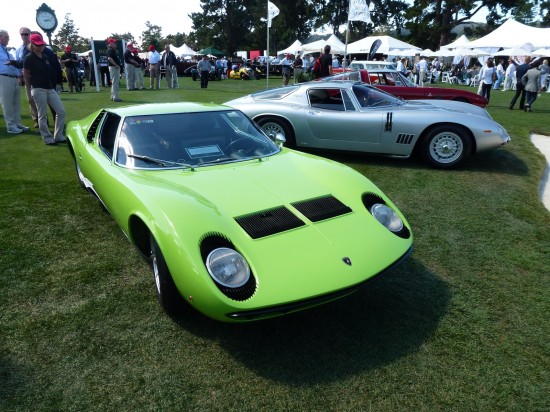
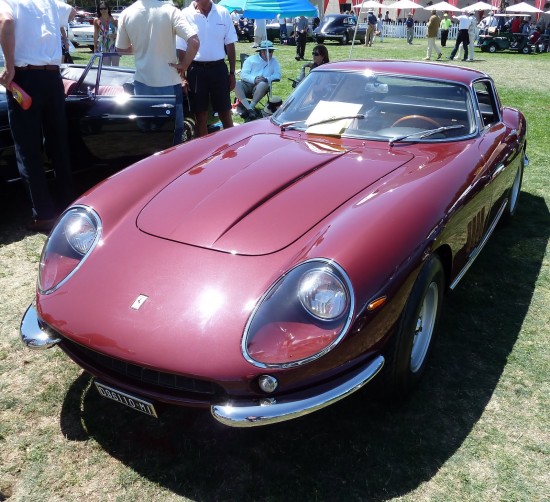
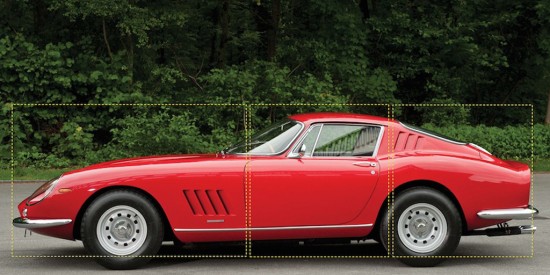
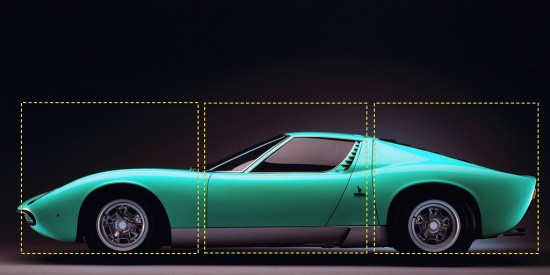
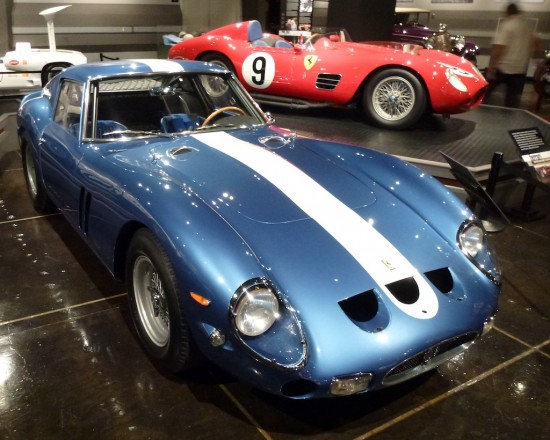




No one would doubt that the 275 GTB/4 is the better investment, but there’s never been, and likely never will be, a car more beautiful than the Miura.
I believe Ford won Le Mans in 1966 with the GT40s.
Chad – of course you are correct. The proper year is 1967 when a 1966 Ferrari 275 Gran Turismo Berlinetta Competizione Scaglietti was a class winner of the 1967 Le Mans 24 Hours. Thank you for pointing that out.
Mike – can we amend the article with that correction please?
Done.
Great article, but all the technical and subjective analyses missed the real point: The bias of the collector. Ferrari has always had the cache because of its racing heritage. It is a legend. Yes, the company builds great cars. But that bias will always favor Ferrari, no matter how significant the opposition car is.
A more pedestrian case in point: Honda cars have such an incredible reputation and following in the US. That helps keep their resale values up. But in other countries, other marques such as Toyota are more highly regarded.
I love both the GTB and the Miura. But the Miura just hits me in the gut as the ultimate of that era.
always appreciated the aesthetics of the Miura, but due to the shared engine/trans lubrication and the fire hazard webers, I never seriously considering buying one.
Perhaps the SV solved the trans/lub issues. Don’t know about the carbs? Was a retrofit ever engineered on that?
MiuraSV and 275
http://www.hagerty.com/valuationtools/HVT/VehicleSearch/Report?vc=1329976
http://www.hagerty.com/valuationtools/HVT/VehicleSearch/Report?vc=924737
from Hgrty:
The third and final variant of this supercar was the Miura SV, of which 120 were built. The SV had widened rear bodywork in order to accommodate larger tires, and as expected, further engine modifications yielded 385 hp. The SV can be readily identified by its lack of fins, or “eyebrows” around the headlights, and the later SVs also finally had a separate oil supply for the transaxle and engine, eliminating the potential for gearbox metal circulating through the engine.
SV would be the one to buy, or in the case of apples and apples whole cost. Investment potential/ the tail of the curve looks up compared to the 275 which is pretty much in the object de art category. At this snapshot the Miura is more interesting to me to tell you the truth.
The SV it still a car I would enjoy driving.. The 275 at $3MM on the road?..yeah, not so much..
Yes I agree optimader. That much money paid for a car makes it hard to use within the original intent of the design. It’s amazing how many cars I LOVED when they were cheaper to own/purchase. Once an object gets too far beyond your ability to use it/enjoy it, the relationship to the desire of it changes drastically.
I realize this is an old discussion but I chanced across this old article yesterday and thought it related:
https://www.hemmings.com/stories/article/scarlet-fever-1967-ferrari-275-gtb-4
This car is still driven on the streets of Tucson by its owner Dave Cummins, who is now in his nineties. I took the attached photo last year at a Cars and Coffee event. Dave is in the background talking to the young lady. When I said to him, “Dave I can’t believe that you still drive this car on the street”, he said, “Where else would I drive it?”
Fun article BTW Raffi.
I occasionally will reflect on the vehicles when watching an old movie, say Hitchcock’s Foreign Correspondent circa 1940 (watched tonight) which is set circa 1930-1940 England/Holland. . A car like the Miura evolved a mere ~25 years later, Not even in the same solar system design/technology w/ 39-40 circa vehicles.
But comparably, even ~50 years on the Miura design still looks fresh and contemporary. That’s what really benchmarks aesthetic design, –timelessness..
The Miura was a lot more innovative,building on the future, so to speak, while the 275GTB was an evolution of front engine cars that came before. On the other hand, even front engine Ferraris of today have similar shapes to the 275GTB so you could argue it is the longer lasting design whereas once Lambo went to Gandinis sharp edged Countach, they abandoned what the Miura had started. It was a design stuck in time that did not have offspring so to speak. And as far as the fires, those carbs on the Miura were never meant to be used sideways and if you don[t run the stock filter/air cleaner, I’ve heard gas can slosh out on hard acceleration and hit the exhaust pipes so Id rate that as a pretty severe design flaw. Nevertheless when a designer friend asked me a few years ago if he should buy a Boxer or a Miura, I told him Miura and he bought it, my reasoning If you’re only going to drive it 15 minutes a week, it’ll be a more exciting 15 minutes. He bought the Miura.